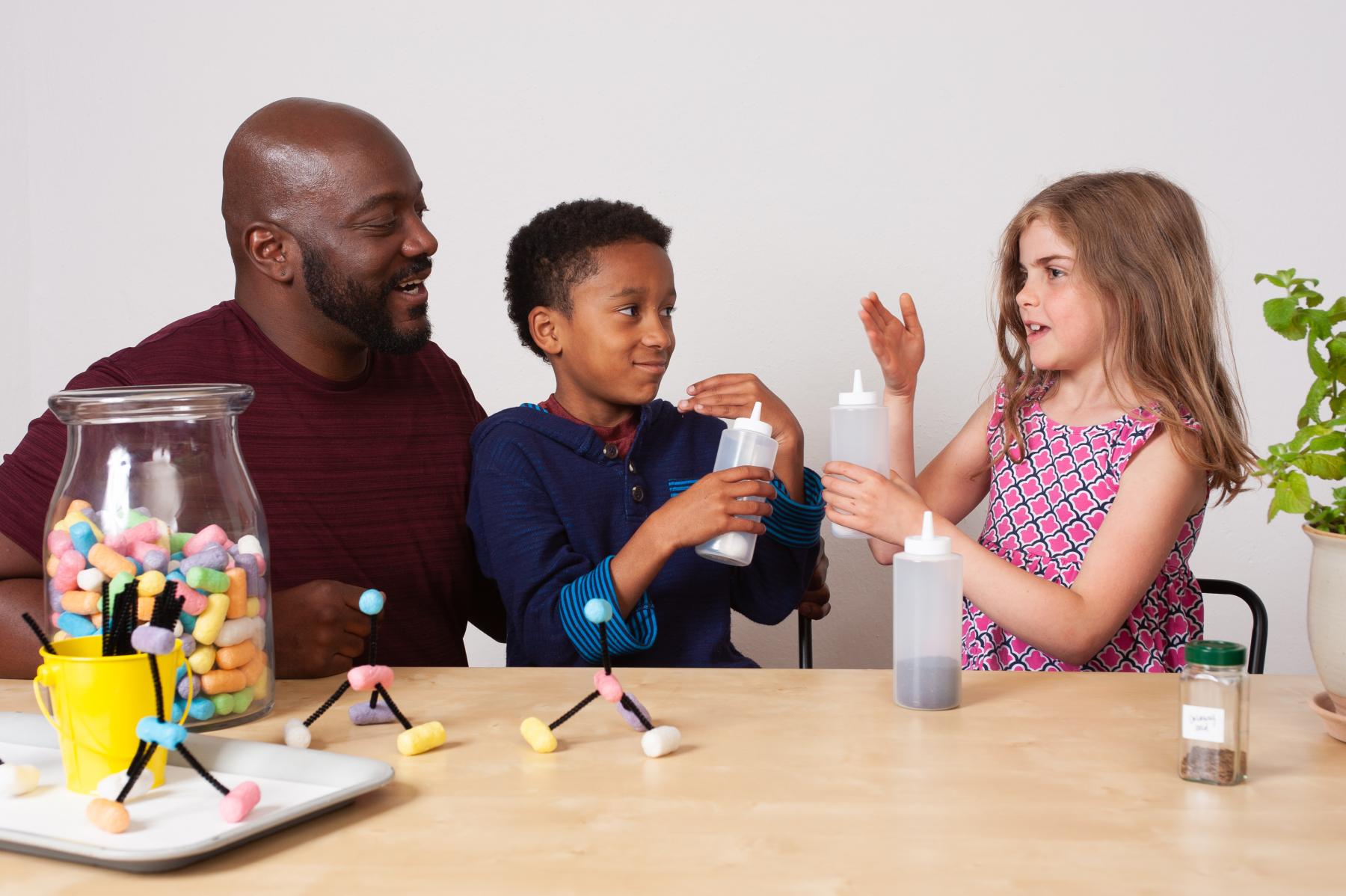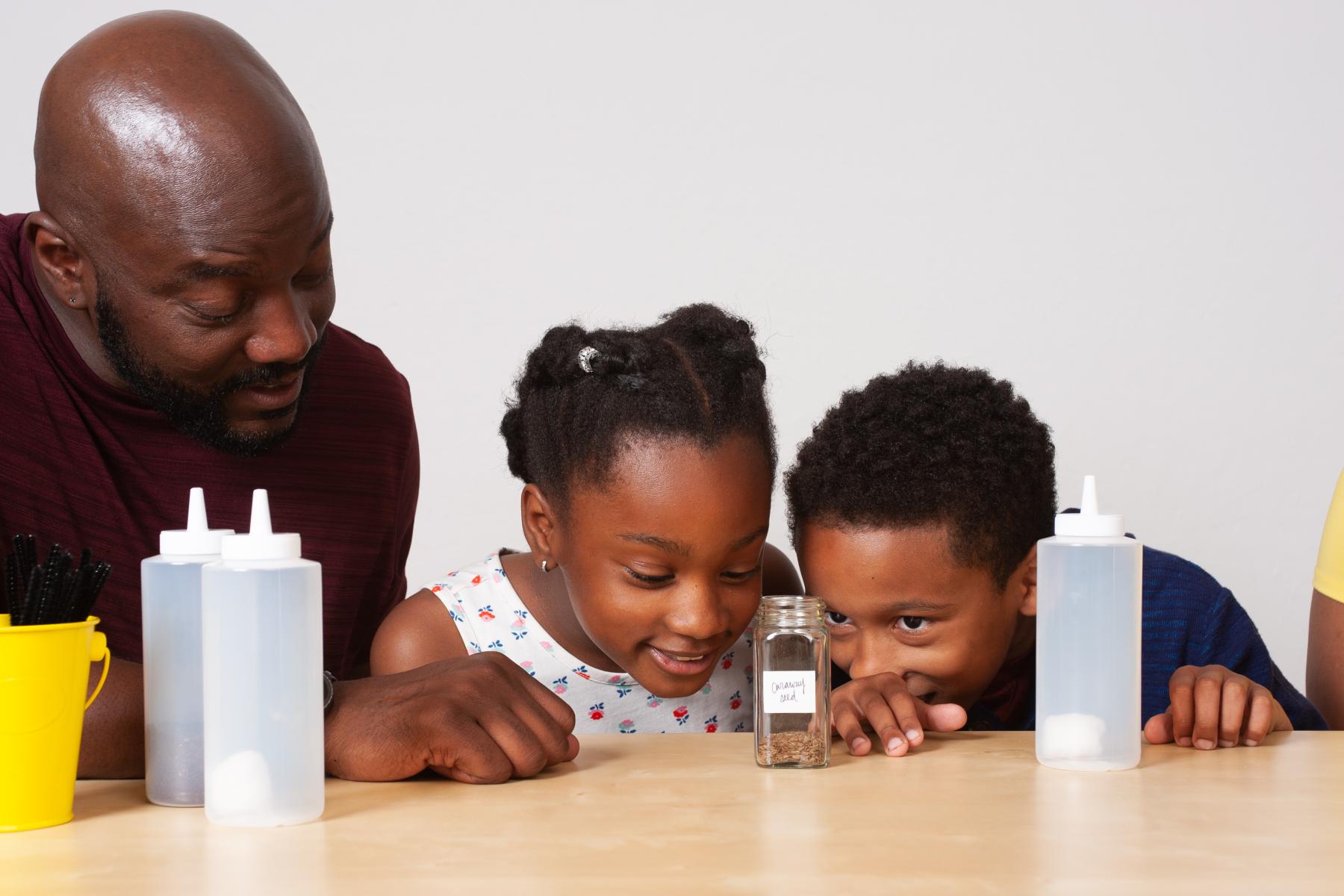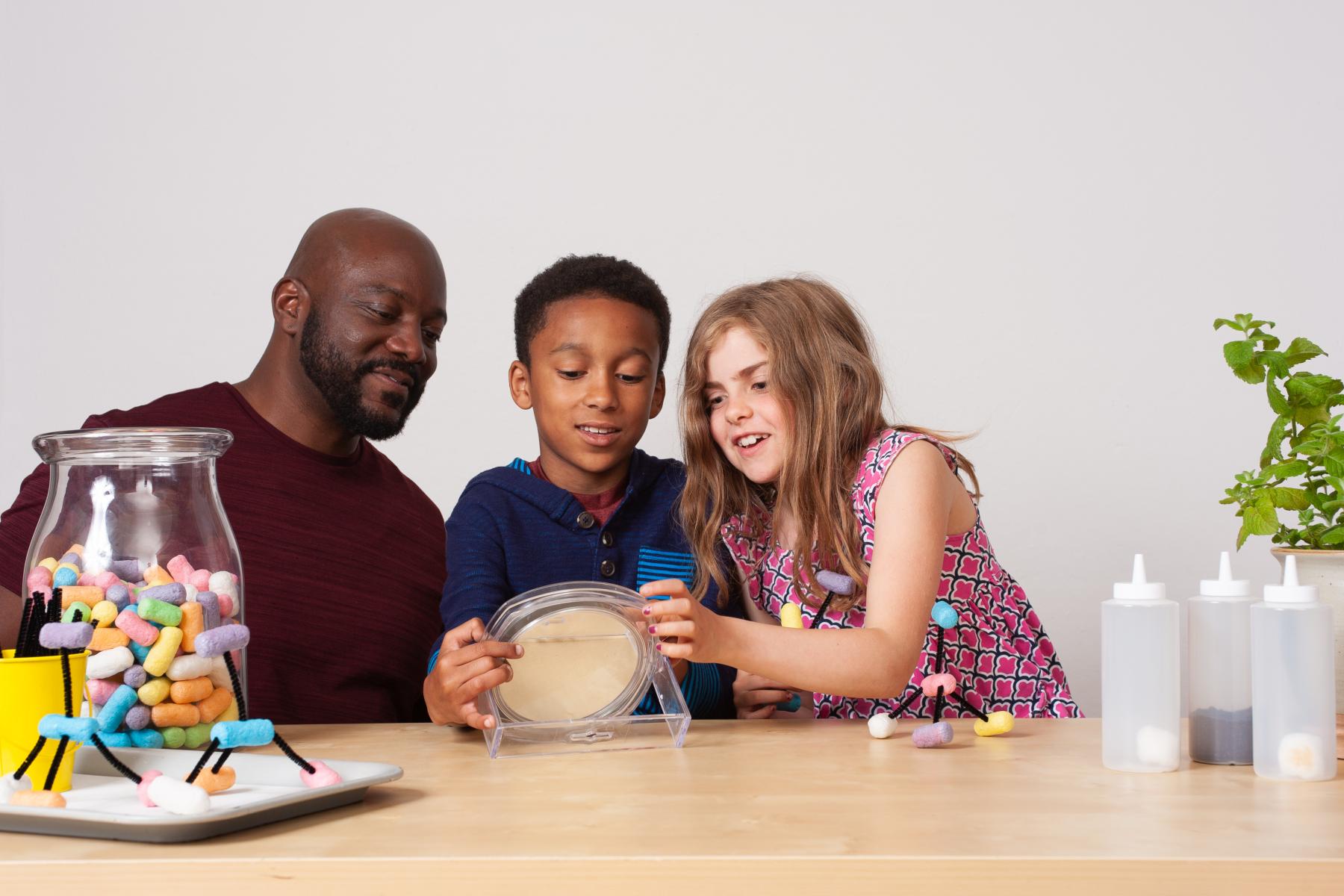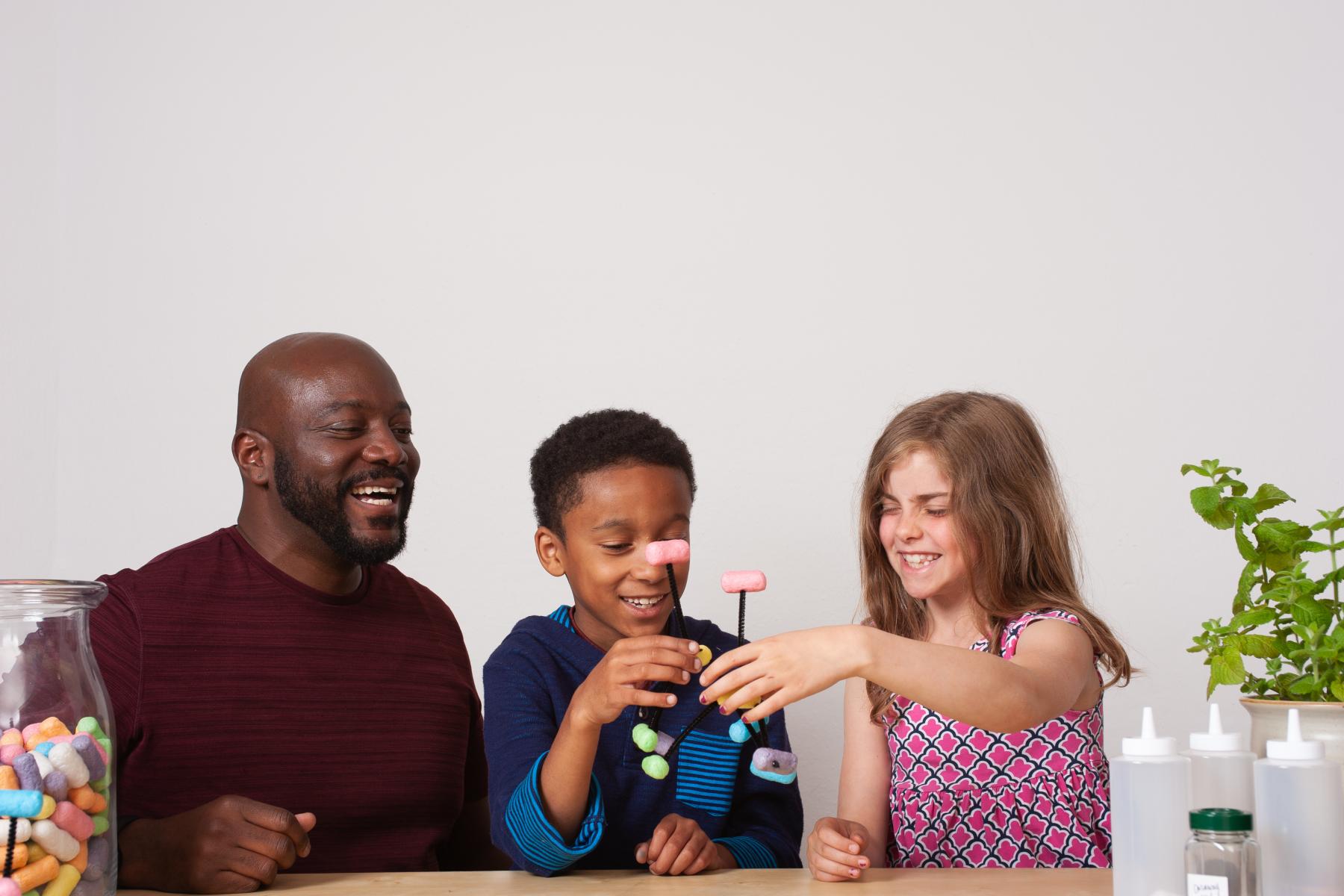DESCRIPTION
The "Chemistry Makes Scents" lets participants use their noses to distinguish between chemicals with very similar structures. Some molecule pairs contain all the same elements, arranged the same way but flipped in a "mirror image." While these chemicals can behave similarly, they often have very different properties (including the way they smell). The activity also uses large molecule models, so participants can handle and visualize their structural differences.
DESCRIPTION
The "Chemistry Makes Scents" lets participants use their noses to distinguish between chemicals with very similar structures. Some molecule pairs contain all the same elements, arranged the same way but flipped in a "mirror image." While these chemicals can behave similarly, they often have very different properties (including the way they smell). The activity also uses large molecule models, so participants can handle and visualize their structural differences.
TRAINING VIDEOS
OBJECTIVES
BIG IDEA
Chemistry can help us understand our world and learn about how materials behave.
Chemists use tools, like models, to discover and make new things.
LEARNING GOALS
Learners will develop positive attitudes toward learning about chemistry:
- Learners will increase their feelings of interest in chemistry by using their sense of smell to explore chemistry concepts, through hands-on manipulation of chemistry models, and by making connections to everyday life.
- Learners will increase their understanding of the relevance of chemistry by exploring the applications of chemistry and by exploring connections to everyday life.
- Learners will increase their sense of self-efficacy related to chemistry through hands-on interaction with models and by successfully doing and understanding the activity.
DOWNLOAD FILES
- Chemistry Makes Scents activity sign (PDF)
- Chemistry Makes Scents activity guide (PDF)
- Chemistry Makes Scents mirror molecule instructions (PDF)
- Chemistry Makes Scents facilitator guide (PDF)
- Caraway oil Safety Data Sheet (PDF)
- Peppermint oil Safety Data Sheet (PDF)
- Mirror Molecules infosheet (PDF)
- Chemistry Makes Scents activity guide (Spanish) (PDF)
- Chemistry Makes Scents mirror molecule instructions (Spanish) (PDF)
- Chemistry Makes Scents mirror molecules sheet (Spanish) (PDF)
- Chemistry Makes Scents activity sign (Spanish) (PDF)
- Mirror Molecules infosheet (Spanish) (PDF)
Credits
Developed for the NISE Network with funding from the National Science Foundation under Grant Number DRL 1612482. Any opinions, findings, and conclusions or recommendations expressed in this material are those of the author(s) and do not necessarily reflect the view of the National Science Foundation. Any opinions, findings, and conclusions or recommendations expressed in this product are those of the authors and do not necessarily reflect the views of the Foundation.
Creative Commons Attribution Non-Commercial Share Alike 3.0 United States (CC BY-NC-SA 3.0 US).
View more details

NISE Network products are developed through an iterative collaborative process that includes scientific review, peer review, and visitor evaluation in accordance with an inclusive audiences approach. Products are designed to be easily edited and adapted for different audiences under a Creative Commons Attribution Non-Commercial Share Alike license. To learn more, visit our Development Process page.






